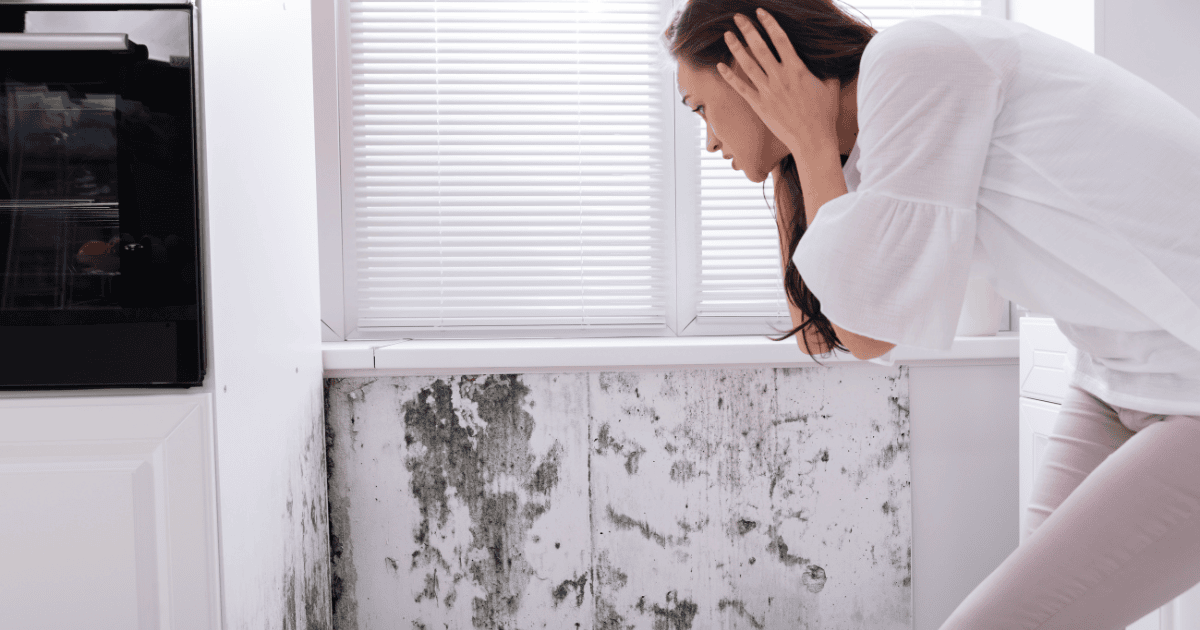Learn how to prevent mold and moss growth in your Seattle home with proactive maintenance tips and strategies from Melody Lane Home Pros.

Owning a home in the Pacific Northwest is rewarding, but it comes with unique challenges. Seattle’s cool, wet climate creates the perfect environment for mold and moss to thrive, especially on roofs, siding, decks, and in poorly ventilated areas indoors. If left unchecked, these growths can damage your home, reduce its value, and even affect your health.
In this guide, we’ll explore why mold and moss grow so easily in Seattle, the dangers of neglecting them, and what proactive steps homeowners, whether new, seasoned, or retired, can take to keep their homes safe, healthy, and beautiful.
Why Mold and Moss Are Common in Seattle
Seattle averages more than 150 rainy days per year and has relatively mild year-round temperatures. This combination of moisture, shade, and organic material is precisely what mold and moss need to thrive.
Moss tends to grow on north-facing roofs, shaded areas under trees, and damp walkways. It feeds on moisture and organic debris such as leaves and pollen.
Mold forms both indoors and outdoors where ventilation is poor and surfaces stay damp. Bathrooms, basements, crawl spaces, and exterior siding are especially vulnerable.
Without routine prevention, small growths can quickly spread and become difficult (and costly) to remove.
Risks of Mold and Moss Growth
Understanding the risks makes it clear why prevention matters.
Structural Risks
Moss on roofs: It can lift shingles, trap water, and accelerate roof deterioration.
Mold indoors: It can weaken drywall, wood framing, and flooring if left untreated.
Health Risks
Exposure to mold spores can cause allergic reactions, respiratory irritation, and asthma flare-ups, especially in children and older adults.
Prolonged exposure to toxic molds (such as Stachybotrys chartarum) can have more serious health consequences.
Financial Risks
- Roof replacements caused by moss damage can cost tens of thousands of dollars.
- Insurance companies often deny claims for mold damage, considering it “preventable” with proper maintenance.
Signs You May Have a Mold or Moss Problem
| Location | Signs of Mold | Signs of Moss |
| Roof | Dark streaks, leaks, musty attic smell | Green patches, lifted shingles, clogged gutters |
| Exterior walls/siding | Discoloration, mildew odor | Fuzzy green growth in shaded areas |
| Indoor rooms | Musty smell, visible black/green patches, allergy symptoms | Not applicable |
| Decks/walkways | Slippery surfaces, discoloration | Green carpet-like patches, slippery areas |
If you notice any of these early, you can often address the issue with simple cleaning or maintenance before it spreads.
Preventing Moss Growth on Seattle Roofs
Seattle roofs are a prime spot for moss due to the damp climate. Here’s how to prevent buildup:
Keep Gutters Clean
Clogged gutters trap moisture, encouraging moss on shingles. Clean them at least twice per year.
Trim Back Overhanging Trees
Sunlight naturally discourages moss. Trimming branches allows your roof to dry out faster.
Install Zinc or Copper Strips
When it rains, these metals release ions that inhibit moss growth.
Schedule Regular Roof Inspections
A professional can spot early moss patches and safely remove them before they spread.
Preventing Mold Growth Indoors
Indoor mold thrives in damp, poorly ventilated areas. Focus on moisture control:
Ventilation
Use exhaust fans in kitchens and bathrooms. Ensure your attic has proper airflow.
Dehumidifiers
In Seattle basements and crawl spaces, a dehumidifier can be a game-changer.
Waterproofing
Seal cracks in foundations and keep landscaping graded away from your home.
Routine Checks
Regularly inspect under sinks, behind appliances, and around windows.

Seasonal Home Maintenance Checklist for Seattle Homeowners
Here’s a proactive schedule to reduce mold and moss risks throughout the year:
| Season | Tasks to Prioritize |
| Spring | Roof and gutter cleaning, exterior pressure washing, and indoor dehumidifier setup |
| Summer | Trim landscaping, inspect siding, clean walkways, and test attic ventilation |
| Fall | Clear gutters/leaves, roof inspection, crawl space check, weatherproof windows & doors |
| Winter | Monitor indoor humidity, check for condensation on windows, and ensure the roof stays clear |
Special Considerations for Retirees and Aging Homeowners
Home maintenance can feel overwhelming, especially for retirees. But being proactive is essential for safety and financial well-being.
Slippery Surfaces: Mossy walkways can cause dangerous falls. Schedule seasonal cleaning or hire a maintenance concierge.
Indoor Air Quality: Mold affects breathing, especially for older adults with respiratory conditions.
Delegating Tasks: Services like Melody Lane Home Pros help manage seasonal checklists, so retirees don’t have to worry about climbing ladders or handling chemicals.
Automations and Services That Can Help
You don’t have to manage everything alone. Here are some modern solutions:
Smart Humidity Monitors
Alert you when indoor humidity exceeds safe levels.
Automated Gutter Guards
Reduce the frequency of gutter cleaning.
Home Maintenance Concierge Services
Create custom schedules and take the guesswork out of seasonal upkeep.
Subscription-Based Inspections
Keep minor problems from becoming major repairs.
Regional Perspective: How This Advice Applies in Austin and Los Angeles
While this article focuses on Seattle, other locations face their own risks:
Austin, TX
Flash freezes can burst pipes, creating hidden leaks that lead to mold growth. Proactive insulation and regular inspections are key.
Los Angeles, CA
Although drought is common, wildfires or seasonal rains can exacerbate the issue, as damaged roofs and poor sealing can lead to mold growth. Ash and soot can also trap moisture, encouraging growth.
By understanding your region’s climate challenges, you can adapt these tips to protect your home no matter where you live.
Scientific Backing: Why Prevention Works
Research shows that controlling moisture levels indoors is the single most effective strategy for preventing mold (U.S. Environmental Protection Agency, 2023). Similarly, studies on roofing materials confirm that copper and zinc strips significantly reduce moss regrowth compared to untreated surfaces (Journal of Environmental Management, 2021).
These aren’t just cosmetic issues; prevention protects both your health and your home’s structure.
Frequently Asked Questions About Mold and Moss in Seattle Homes
1. Does moss damage roofs in Seattle?
Yes. Moss growth traps moisture against shingles, which can cause them to lift, curl, and eventually break. Over time, this can shorten the lifespan of your roof and even lead to leaks. Preventive roof cleaning and the use of copper or zinc strips are the best defenses.
2. What’s the best way to prevent mold in Seattle basements?
The key is moisture control. Use a dehumidifier, seal foundation cracks, and ensure gutters and landscaping direct water away from the home. Regularly inspecting for leaks or damp spots helps catch issues early before mold has a chance to spread.
3. Can moss and mold affect my health?
Moss itself is not typically harmful indoors, but outdoors, it can create slippery surfaces that pose a fall hazard.
4. How often should I clean my gutters in Seattle?
Because of the region’s heavy rainfall and tree cover, most Seattle homeowners should clean gutters at least twice per year—in spring and fall. If your home is under large trees, you may need to check them more frequently to prevent moss and mold buildup.
5. What are the signs of hidden mold in my home?
Musty odors, unexplained allergy symptoms, water stains, or warped drywall can all point to hidden mold. Areas under sinks, behind washing machines, or inside crawl spaces are common problem spots. Professional inspections can confirm and safely remove mold if you suspect an issue.
6. Should retirees and older homeowners handle moss removal themselves?
It’s not recommended. Moss removal often requires climbing ladders or working with cleaning solutions, which can pose safety risks. Retirees are better off using a home maintenance concierge or handyman service to reduce the chance of injury.

Take Proactive Steps Today
Preventing mold and moss growth in Seattle isn’t complicated, but it requires consistent, proactive care. By focusing on moisture control, seasonal maintenance, and professional inspections when needed, you can keep your home safe, healthy, and beautiful year-round.
Whether you handle these tasks yourself, hire a local handyman, or work with a home maintenance concierge, the important thing is not to ignore them.
Ready to simplify your home maintenance checklist? VisitMelody Lane Home Pros to learn more about how proactive care can save you time, money, and peace of mind.

